 W
WThe Culture of Sarajevo is represented in various ways.
 W
WThe Academy of Fine Arts Sarajevo is a faculty within the University of Sarajevo in Sarajevo, Bosnia and Herzegovina, dedicated to the fine arts.
 W
WArs Aevi is a museum of contemporary art in Sarajevo, Bosnia and Herzegovina. It was established during the siege of Sarajevo as a cultural resistance movement to the Bosnian war. It holds a collection of 1,600 pieces, including approximately 130 works by renowned world artists such as Pablo Picasso, Michelangelo Pistoletto, Jannis Kounellis, Joseph Beuys, Marina Abramović and Joseph Kosuth. A new museum building, designed by Renzo Piano, is planned to be built in the upcoming years.
 W
WBolero, Sarajevo or shortened Bolero is the name of a theatre show produced by the East West Theatre Company from Bosnia and Herzegovina and Tala Dance Center from Croatia. Authors, choreographer Tamara Curic from Zagreb, Croatia and director Haris Pasovic, created a dance performance in which Sarajevo and choreography impressed with Maurice Béjart's work are in interaction. They were largely inspired by the flux of Sarajevo, Ravel's music and 'Béjartesque' swinging bodies. Performance included dancers from Zagreb who regularly collaborate with the TALA Dance Centre, actors of the East West Theatre Company from Sarajevo, and the members of the Sarajevo National Theatre's Ballet Company.
 W
WThe Bosniak Academy of Sciences and Arts is an academic institution in Bosnia and Herzegovina. The institution is based in Sarajevo (BiH) and has divisions in both Sarajevo and Novi Pazar (Serbia) to better reflect Bosniak interests in Bosnia and Herzegovina and Sandžak.
 W
WThe Bosniak Institute is a unique institution of culture and scholarship. It is a museum and a gallery, a cultural centre and a library, a publishing house and a cultural centre, everything at the same time. The Institute is the result of decades-long activities and efforts of its founder, Adil Zulfikarpašić, an endower (waqf), patron, businessman, politician and champion of promotion of cultural and educational life in Bosnia and Herzegovina, who, together with his wife Tatjana Zulfikarpašić, collected and preserved cultural heritage and contemporary production about Bosnia and Herzegovina, ranging from documents, photographs, postcards, maps, to books, encyclopaedias, journals, and other archival and library materials. The Bosniak Institute was founded in Zurich in 1988, and after the aggression against Bosnia and Herzegovina the entire stock was moved to Sarajevo when the Bosniak Institute was opened in 2001.
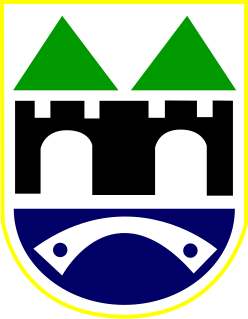 W
WThe Coat of Arms of Sarajevo is the coat of arms of the city of Sarajevo, the capital of Bosnia and Herzegovina.
 W
WCollegium Artisticum is a contemporary art gallery in Sarajevo, Bosnia and Herzegovina. It was established on 6 April 1975 and was named after the short lived artistic movement of the same name which existed in Sarajevo from 1939 to the start of the Second World War. It was founded as the gallery of Bosnia and Herzegovina’s three major Art Associations – Association of Artists (ULUBIH), Association of Applied Arts and Design (ULUPUBIH) and Association of Architects (AABIH). Today it functions as an Public Institution City Gallery Collegium Artisticum and hosts the annual Collegium Artisticum exhibition.
 W
WCopenhagen is the name of East West Theatre Company's theatre production of the same name; written by Michael Frayn and directed by Nermin Hamzagic. This show is Nermin Hamzagic's first professional directorial engagement and it was soon followed by a documentary called Dreamers which was selected for screening at Sarajevo Film Festival 09 and Jihlava documentary film festival.
 W
WDespić House is an old merchant house in Sarajevo, Bosnia and Herzegovina that was established in 1881 by one of the wealthiest and most prominent Serb families in Sarajevo. It is a branch of the Museum of Sarajevo.
 W
WDom Mladih is a multifunctional venue of modern concept and interior, located in Sarajevo, Bosnia and Herzegovina, as part of Skenderija, which is equipped with state-of-the-art technology, consisting of a dance hall with a capacity of 2000 visitors and the amphitheater with a capacity of up to 600 visitors.
 W
WEurope Today is a theatre show produced in cooperation between East West Theatre Company and Slovene National Theatre. The show is based on an essay written by Miroslav Krleza and directed by Haris Pasovic. Production also included Miki Manojlovic, an actor; Edward Clug, a contemporary dancer and choreographer; as well as the industrial, neoclassical band Laibach. The dramaturgy of the production was done by Dubravka Vrgoc, director of Zagreb Youth Theatre. The artists, who reside in Slovenia, Serbia, Bosnia and Herzegovina and Croatia, rehearsed in Maribor's Slovene National Theatre during February 2011. The show opened February 16 and it provoked great regional and international interest.
 W
WFaust is the name of the show produced by the East West Theatre Company and directed by Haris Pasovic. The action is set in the foreseeable future and the script is based on texts by Emil Cioran, Bertrand Russell, Christopher Marlowe, Bill Joy, Werener Heisenberg and Haris Pasovic.
 W
WFootball, Football is a theatre show produced by the East West Theatre Company in cooperation with Napoli Teatro Festival Italia, Singapore Arts Festival, Flota Institute from Slovenia, Ballets C. de la B, and patronage by Fondazione Cannavaro Ferrara Napoli Teatro Festival. Football, Football was directed, conceived and written by Haris Pašović. Since the opening in May 2010, it has been performed for fifteen times on three continents. The artists from four continents and seven countries participated in this project.
 W
WHKD Napredak is a cultural society of Croats of Bosnia and Herzegovina.
 W
WThe ICAR Canned Beef Monument is a public outdoor sculpture in Sarajevo.
 W
WThe International Center for Children and Youth is a cultural and arts center located in the Novo Sarajevo municipality, Sarajevo, Bosnia and Herzegovina. It was constructed in 1961 and was originally named the Vaso Pelagić Cultural Center after Vasa Pelagić, the 19th century Bosnian Serb writer, physician, educator, clergyman, nationalist and a proponent of utopian socialism. The center was heavily devastated during the Bosnian war and was subsequently renovated in 1997. In 2001 the center was expanded, rebranded and reestablished as the International Center for Children and Youth.
 W
WKamerni teatar 55 is a theater in Sarajevo, established in 1955. It is registered as public institution under the Ministry of Culture and Sport of Canton Sarajevo.
 W
WThe Museum of Sarajevo 1878–1918 is located near the Latin Bridge in central Sarajevo, the capital of Bosnia and Herzegovina. The building had been Moritz Schiller's Delicatessen in 1914, the year that Franz Ferdinand, the heir-presumptive of Austria Hungary was shot dead by Gavrilo Princip from the street corner outside, indirectly starting World War I.
 W
WThe National Gallery of Bosnia and Herzegovina is a national gallery of art in Bosnia and Herzegovina, located in Sarajevo. The gallery was established on October 11, 1946, and contains over 6000 pieces of art. Its main focus are the works of Bosnian and Herzegovinian interest. The gallery was open and held exhibitions during the whole period of the siege of Sarajevo and the Bosnian war in 1992-1995. However, afterwards it received considerably less funding due to the failure of the government of Bosnia and Herzegovina to recognize the gallery as a national institution.
 W
WNora is a theatre show directed by Haris Pasovic and produced by the East West Theatre Company based in Sarajevo, Bosnia and Herzegovina. The show is based on Henrik Ibsen's 1879 play A Doll's House, which was translated into Bosnian by Munib Delalic. Nora is the story of a young successful couple who seemingly live a perfect life but suffer from marital problems under the surface.
 W
WThe Sarajevo Haggadah is an illuminated manuscript that contains the illustrated traditional text of the Passover Haggadah which accompanies the Passover Seder. It is one of the oldest Sephardic Haggadahs in the world, originating in Barcelona around 1350. The Haggadah is owned by the National Museum of Bosnia and Herzegovina in Sarajevo. Its monetary value is undetermined, but a museum in Spain required that it be insured for $7 million before it could be transported to an exhibition there in 1992.
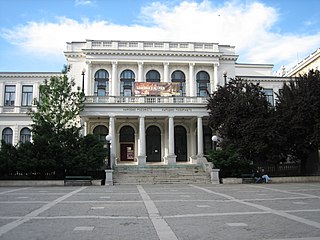 W
WThe Sarajevo National Theatre was founded in November 1921.
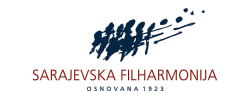 W
WThe Sarajevo Philharmonic Orchestra is an orchestra in Sarajevo.
 W
WSarajevo Pride, or Bosnian-Herzegovinian Pride, is the LGBT pride parade in the city of Sarajevo, the capital of Bosnia and Herzegovina, which first took place in 2019.
 W
WSarajevo Red Line is the name of the memorial event organized in cooperation between the City of Sarajevo and East West Theatre Company which commemorated the Siege of Sarajevo's 20th anniversary. It was held April 6, 2012, in the main Sarajevo street and it consisted of a large chair installation, street exhibition of war posters and a concert. Authors describe Sarajevo Red Line as a drama and music poem dedicated to the Sarajevo citizens killed during the 1992-96 siege of their city.
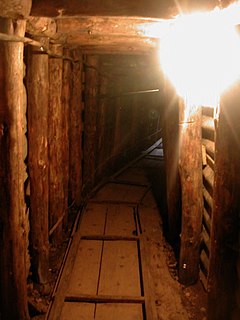 W
WThe Sarajevo Tunnel, also known as Tunel spasa and Tunnel of Hope, was a tunnel constructed between March and June 1993 during the Siege of Sarajevo in the midst of the Bosnian War. It was built by the Bosnian Army in order to link the city of Sarajevo, which was entirely cut off by Serbian forces, with Bosnian-held territory on the other side of the Sarajevo Airport, an area controlled by the United Nations.
 W
WThe Sarajevo War Theatre is a theatre in Sarajevo, Bosnia and Herzegovina. It was founded on 17 May 1992 on the initiative of Dubravko Bibanović, Gradimir Gojer, Đorđe Mačkić and Safet Plakalo during the Siege of Sarajevo. It was a gathering place for theatre professionals and Academy of Performing Arts students for the duration of the war. Today, it is a commercial theatre and the premium experimental showcase in Bosnia and Herzegovina. It is one of the venues for the MESS International Theatre Festival and the sole venue for the Open University of Sarajevo.
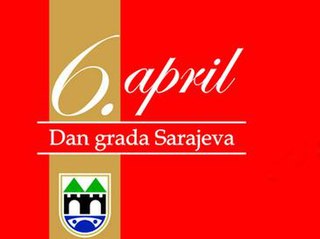 W
WThe Sixth of April Sarajevo Award is the highest decoration given by the city of Sarajevo. Recipients are awarded for their continuous work and achievements in the fields of science, business, education, technology, health care, art, sports, and human rights. The award is given annually by the City Assembly of Sarajevo.
 W
WSvrzo's House is an old house in Sarajevo, Bosnia and Herzegovina that was established when the Ottoman Empire ruled the area. It is a branch of the Museum of Sarajevo. It is typical in that it has living quarters for the men, the women, and the servants. The house is in extremely well preserved condition, which is noteworthy in that the house is built completely from wood; a construction method not commonly used in the region in modern times. It is open to the public for self-guided tours and has brochures and information in multiple languages.
 W
WUgly Duckling is the name of the show produced by the East West Theatre Company from Sarajevo in 2009. The play was based on Hans Christian Andersen’s 1843 fairy tale "The Ugly Duckling" and references ubiquitous problem of non-acceptance of those who are “different” during the most vulnerable period in their development, that is, during the childhood. The show is aimed at children aged four to nine years and is directed by a director Elma Islamovic. The original cast involves the following actors: Maja Zećo, Emir Fejzić, Sanela Krsmanović, Amila Terzimehić, Adi Hrustemović, Enes Salković and a producer Nermin Hamzagić.
 W
WWalter Defends Sarajevo is a 1972 Yugoslav partisan film, directed by Hajrudin Krvavac and starring Bata Živojinović, Ljubiša Samardžić and Rade Marković.